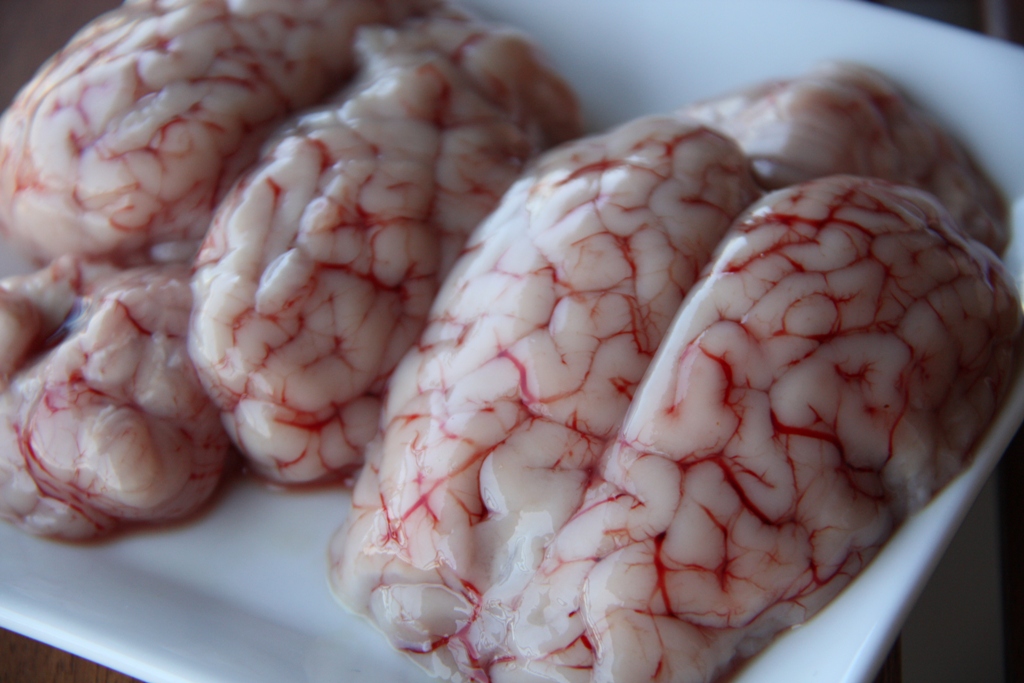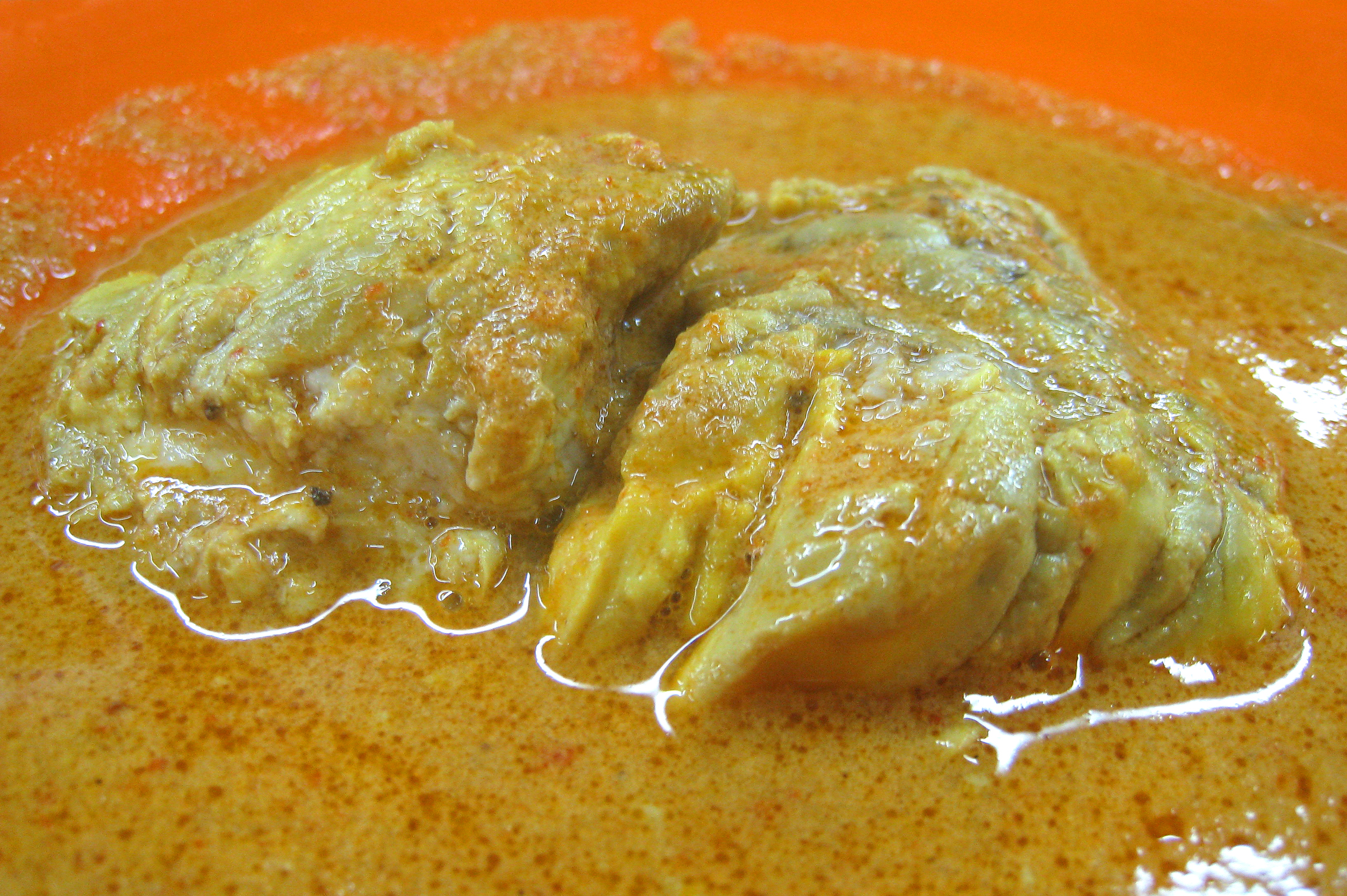Brain As Food on:
[Wikipedia]
[Google]
[Amazon]

 The
The

 The
The brain
A brain is an organ that serves as the center of the nervous system in all vertebrate and most invertebrate animals. It is located in the head, usually close to the sensory organs for senses such as vision. It is the most complex organ in a v ...
, like most other internal organs, or offal
Offal (), also called variety meats, pluck or organ meats, is the organs of a butchered animal. The word does not refer to a particular list of edible organs, which varies by culture and region, but usually excludes muscle. Offal may also refe ...
, can serve as nourishment. Brains used for nourishment include those of pig
The pig (''Sus domesticus''), often called swine, hog, or domestic pig when distinguishing from other members of the genus '' Sus'', is an omnivorous, domesticated, even-toed, hoofed mammal. It is variously considered a subspecies of ''Sus s ...
s, squirrel
Squirrels are members of the family Sciuridae, a family that includes small or medium-size rodents. The squirrel family includes tree squirrels, ground squirrels (including chipmunks and prairie dogs, among others), and flying squirrels. Squ ...
s, rabbit
Rabbits, also known as bunnies or bunny rabbits, are small mammals in the family Leporidae (which also contains the hares) of the order Lagomorpha (which also contains the pikas). ''Oryctolagus cuniculus'' includes the European rabbit speci ...
s, horse
The horse (''Equus ferus caballus'') is a domesticated, one-toed, hoofed mammal. It belongs to the taxonomic family Equidae and is one of two extant subspecies of ''Equus ferus''. The horse has evolved over the past 45 to 55 million y ...
s, cattle
Cattle (''Bos taurus'') are large, domesticated, cloven-hooved, herbivores. They are a prominent modern member of the subfamily Bovinae and the most widespread species of the genus ''Bos''. Adult females are referred to as cows and adult mal ...
, monkey
Monkey is a common name that may refer to most mammals of the infraorder Simiiformes, also known as the simians. Traditionally, all animals in the group now known as simians are counted as monkeys except the apes, which constitutes an incomple ...
s, chicken
The chicken (''Gallus gallus domesticus'') is a domesticated junglefowl species, with attributes of wild species such as the grey and the Ceylon junglefowl that are originally from Southeastern Asia. Rooster or cock is a term for an adult m ...
s, camel
A camel (from: la, camelus and grc-gre, κάμηλος (''kamēlos'') from Hebrew or Phoenician: גָמָל ''gāmāl''.) is an even-toed ungulate in the genus ''Camelus'' that bears distinctive fatty deposits known as "humps" on its back. C ...
s, fish
Fish are aquatic, craniate, gill-bearing animals that lack limbs with digits. Included in this definition are the living hagfish, lampreys, and cartilaginous and bony fish as well as various extinct related groups. Approximately 95% of li ...
, lamb
Lamb or The Lamb may refer to:
* A young sheep
* Lamb and mutton, the meat of sheep
Arts and media Film, television, and theatre
* ''The Lamb'' (1915 film), a silent film starring Douglas Fairbanks Sr. in his screen debut
* ''The Lamb'' (1918 ...
, and goat
The goat or domestic goat (''Capra hircus'') is a domesticated species of goat-antelope typically kept as livestock. It was domesticated from the wild goat (''C. aegagrus'') of Southwest Asia and Eastern Europe. The goat is a member of the a ...
s. In many cultures, different types of brain are considered a delicacy
A delicacy is usually a rare and expensive food item that is considered highly desirable, sophisticated, or peculiarly distinctive within a given culture. Irrespective of local preferences, such a label is typically pervasive throughout a r ...
.
Cultural consumption
The brain of animals features inFrench cuisine
French cuisine () is the cooking traditions and practices from France. It has been influenced over the centuries by the many surrounding cultures of Spain, Italy, Switzerland, Germany and Belgium, in addition to the food traditions of the re ...
, in dishes such as '' cervelle de veau'' and ''tête de veau
Tête de veau (French 'calf's head') or testina di vitello (Italian) is a dish consisting of a calf's head, commonly found in French, Belgian, German, Swiss, and Italian cuisine.
Tête de veau may be served whole or boned. When boned, it is ro ...
''. A dish called maghaz
Maghaz ( hi, मग़ज़, Urdu: , bn, মগজ), also known as Bheja ( hi, भेजा, ur, بھیجا), is an offal dish, originating from Hyderabad, India, but is also popular in Pakistani and Bangladeshi cuisine. It is the brain o ...
is a popular cuisine in Pakistan, Bangladesh, parts of India, and diaspora countries. In Turkish cuisine, brain can be fried, baked, or consumed as a salad. In Chinese cuisine, brain is a delicacy in Chongqing or Sichuan cuisine, and it is often cooked in spicy hot pot or barbecued. In the southern part of China, pig brain is used for ''tianma zhunao tang''. In South India, goat brain curry or fry is a delicacy. Even in Mumbai, the local indigenous East Indian community has their own version of brain masala curry.
Similar delicacies from around the world include the Mexican cuisine, Mexican ''tacos de sesos''. The Anyang tribe of Cameroon practiced a tradition in which a new tribal chief would consume the brain of a hunted gorilla, while another senior member of the tribe would eat the heart. Indonesian cuisine specialty in Minangkabau people, Minangkabau cuisine also has a dish consisting of beef brain in a coconut-milk gravy named gulai banak (beef brain curry). In the Philippines, tuslob buwa is a popular street food in the regional capital of Cebu City made from fried pig brain. In Cuban cuisine, "brain fritters" are made by coating pieces of brain with bread crumbs and then frying them.
In the Ohio River Valley fried brain sandwiches are popular, especially in the Evansville, Indiana area.
Nutritional composition
Docosahexaenoic acid, DHA, an important omega-3 fatty acid, is found concentrated in mammalian brains. For example, according to Nutrition Data, 85g (3 oz) of cooked beef brain contains 727 mg of DHA. By way of comparison, the NIH has determined that small children need at least 150 mg of DHA per day, and pregnant and lactating women need at least 300 mg of DHA. The makeup of the brain is about 12% lipids, most of which are located in myelin (which itself is 70–80% fat). Specific fatty acid ratios will depend in part on the diet of the animal it is harvested from. The brain is also very high in cholesterol. For example, a single 140g (5 oz) serving of "pork brains in milk gravy" can contain 3500 mg of cholesterol (1170% of the USRDA).Prions
Beef brain consumption has been linked to Variant Creutzfeldt–Jakob disease outbreaks in humans which lead to strict regulations about what parts of cattle can be sold for human consumption in numerous countries. Another prion disease called Kuru (disease), kuru has been traced to a funerary ritual among the Fore (people), Fore people of Papua New Guinea in which those close to the dead would eat the brain of the deceased to create a sense of immortality.References
External links
* {{DEFAULTSORT:Brain (As Food) Offal Brain dishes,